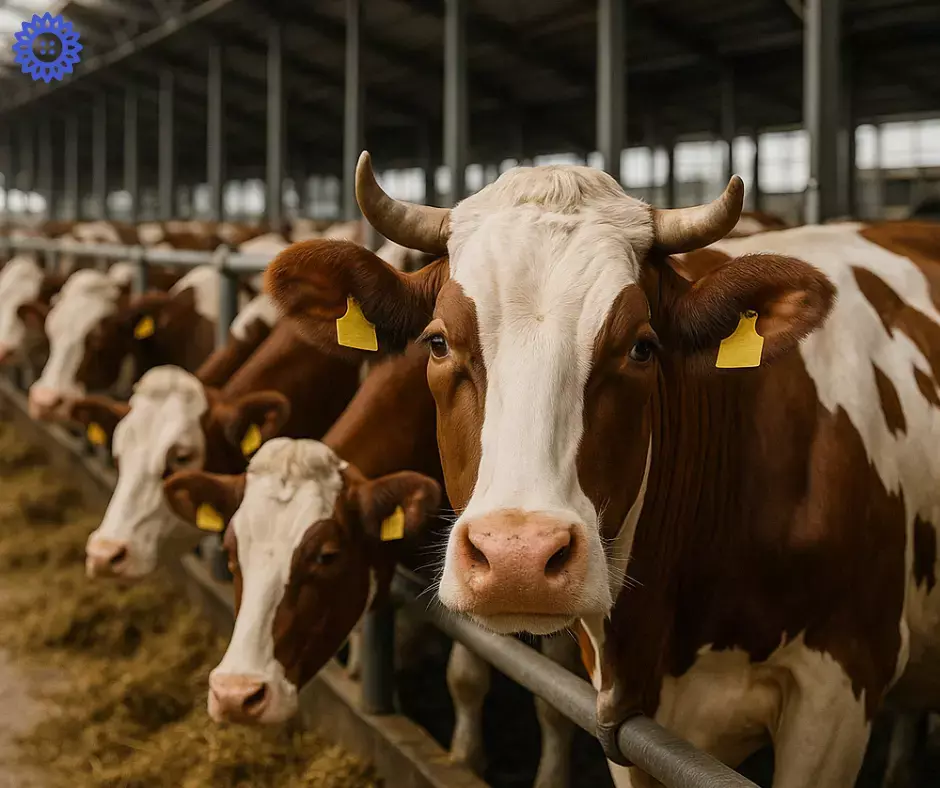21.04.2025, 09:54
Minister of Agriculture Urges Karaganda Farmers to Develop Animal Husbandry
Minister Saparov called on every farm to develop livestock operations, emphasizing its importance for sustainable agricultural growth

An expanded meeting on the development of the agro-industrial complex was held in the Karaganda region, attended by Minister of Agriculture Aidarbek Saparov, regional akim Yermaganbet Bulekpaev, as well as representatives from agricultural science, financial institutions, and local agricultural enterprises. The central topic of the meeting was the preparation for spring fieldwork and the implementation of government support for the sector.
According to the data presented, Kazakhstan plans to sow 23.7 million hectares in 2025 — an increase of 413 thousand hectares compared to the previous year. The majority of the sowing area will traditionally be allocated for grain and leguminous crops — 16.6 million hectares, while oilseeds and forage crops will occupy 3.3 million hectares each. Southern regions have already commenced fieldwork.
Crop production is only one part of a broader plan aimed at doubling the gross output of the agro-industrial complex within the next five years. A Roadmap has been developed to address all key areas of the sector.
In 2025, 1 million hectares will be included in the diversification program. The area under high-yield crops will increase significantly: sunflower (+121 thousand ha), forage crops (+127 thousand ha), barley (+158 thousand ha), and buckwheat (+41 thousand ha). According to the Minister of Agriculture, the sector must work “twice as hard,” and all necessary resources are already available.
The meeting also paid special attention to financial support mechanisms. The volume of concessional loans for spring fieldwork this year has reached a record 700 billion tenge. As of today, more than 6,300 applications have been submitted for a total of 450 billion tenge, covering 4.7 million hectares.
To resolve collateral issues, farmers can use state guarantees from the “Damu” Fund, covering up to 85% of the loan amount. Additionally, 200 billion tenge has been allocated for concessional leasing of agricultural machinery.
Producers were also advised to actively use fertilizers and pesticides and improve the quality of seed material. In the Karaganda region, the sown area this year will be 1.2 million hectares, 109 thousand tons of seeds have been stocked, and 93 thousand tons of mineral fertilizers are planned for application. The readiness of agricultural machinery is at 100%.
The development of animal husbandry was a separate topic raised during the meeting. According to the ministry, this direction should become a key driver of rural employment and stable demand for fodder. In 2025, a new concessional loan program will also cover the livestock sector. At the initial stage, 50 billion tenge will be allocated for working capital of cattle and small ruminant feedlots.
Subsidy mechanisms for delivering livestock for fattening and processing are also being revised — this should boost production and eliminate inefficient practices.
The ministry emphasized that each agricultural enterprise should develop its own livestock block. Regional akimats were instructed to intensify efforts in this area.
At the end of the meeting, the regional akim ordered that the sowing campaign be carried out within optimal agrotechnical timeframes using modern technologies and quality seeds.
After the meeting, Minister Saparov held a personal reception, during which farmers raised issues related to breeding livestock, investment project implementation, and the creation of a regional meat cluster.
Key takeaways:
• In 2025, Kazakhstan will expand sown areas to 23.7 million hectares, with a focus on diversification and high-profit crops.
• Concessional lending for sowing reached a record 700 billion tenge; farmers can access state guarantees and agricultural machinery through leasing.
• Minister Saparov called on every farm to develop livestock operations, emphasizing its importance for sustainable agricultural growth.